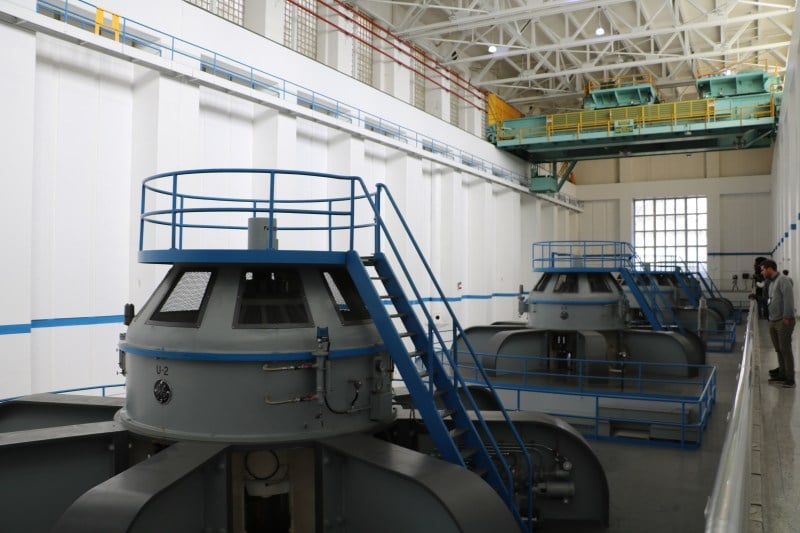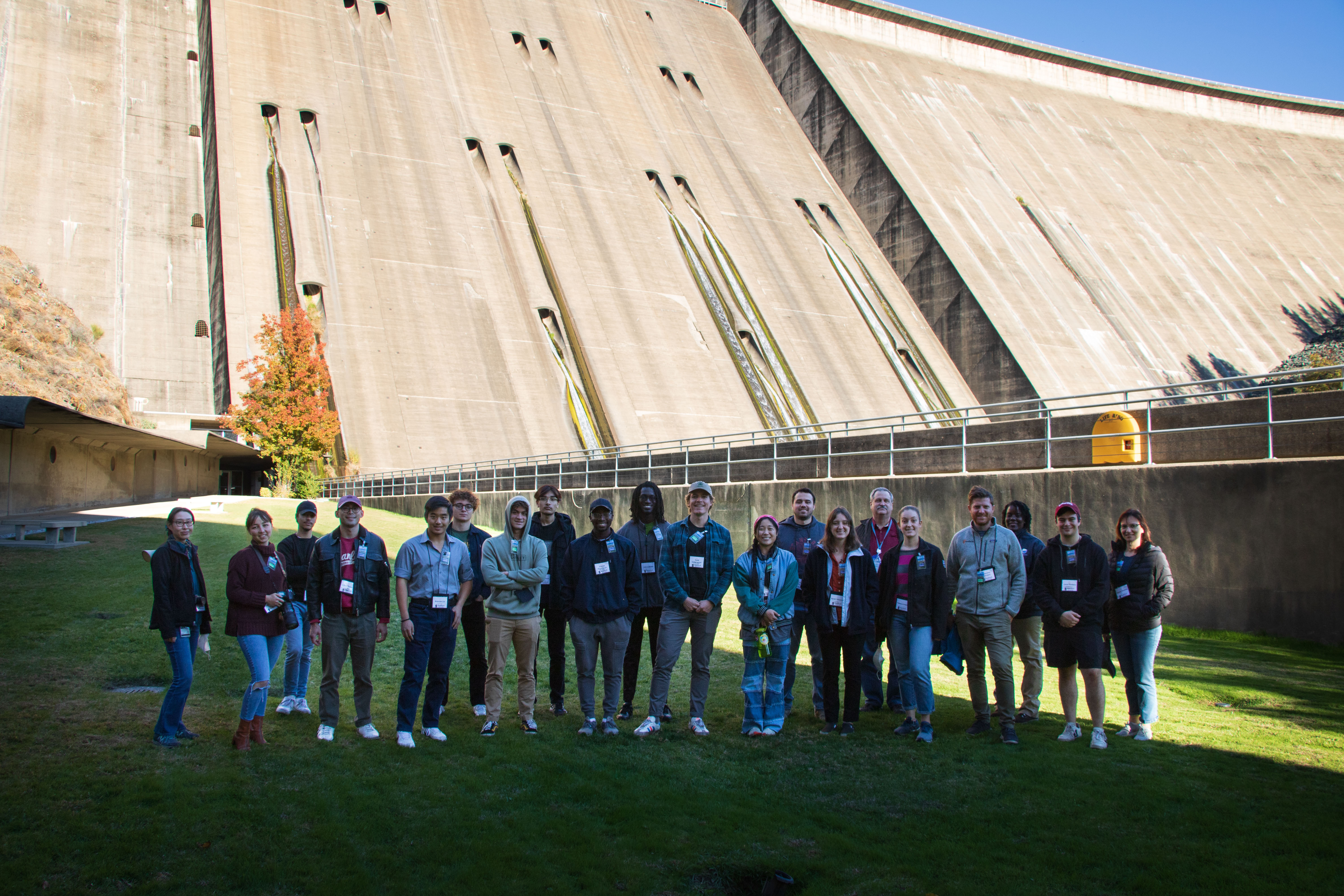A group of CEE107A: “Understand Energy” students visited Shasta Dam in November to learn about its impact on California’s electricity and freshwater supply.
The dam, which is nearly twice as wide as the Hoover Dam and one of the tallest dams in the United States, lies across the Sacramento River in Northern California. Shasta’s power plant operates five turbines that generate enough electricity to supply half a million homes, which is approximately 4% of California’s population.
“Shasta is the most important thing for the state of California,” said Kevin Jacobs, an operations and maintenance manager at the U.S. Department of the Interior’s Bureau of Reclamation. “It is not a local dam. It delivers power and water throughout the state, all the way down to Bakersfield.”
After learning about Shasta’s history and construction, the group of students was led on a tour to the base of the dam and generating station. The group also entered a tunnel, extending partially through the thick of the dam, where copper cooling tubes were seen through the concrete blocks.
Brennan Lieu ‘25 was among many grateful students who went on the trip.
“[The trip] was an amazing educational experience,” Lieu said. “Typically we learn from books or articles; visiting Shasta Dam in person allowed us to appreciate its scale and importance. It also allowed us to ask questions to the experts that work at the dam.”
Shasta Dam is located in Redding, Calif., about a four-hour drive north of Stanford’s campus. It was completed in 1945, though it started generating electricity a year prior to its completion to aid with the WWII effort. Considered a modern feat of engineering, Shasta Dam provides power and water throughout the state.
After learning the history of Shasta Dam, students embarked on a guided tour through exclusive areas normally closed to the public. They walked to the base of the towering structure, stepping within feet of the five school bus-sized penstocks that carry water from Shasta Lake to the turbines in the power plant.
“Visiting gave me more depth into the scale of it all — the dam was massive,” Kai Mottley ‘26 said. “It also helped me visualize the construction process more; from what I remember, they didn’t use any [steel] rebar. They placed concrete in these big blocks, building the dam like legos.”

Students also had a chance to visit the generating station, where the turbine produced an audible whir.
“What I found to be the most interesting is how the dam uses turbines to generate electrical power from the gravitational potential energy of the water,” Lieu said. “There are five turbines, each of which can produce more than 100 megawatts (MW). The entire Stanford Campus has a peak power demand of 42 MW, which goes to show the true size and scale of the dam.”
During the tour, only one of the five generators was running. Jacobs explained the rationale behind the lowered generating capacity.
“One of the best things about hydroelectric power is that we can immediately turn on a turbine to match demand,” Jacobs said. “Right now the demand is low, so only one [turbine] is running.”
The original purpose of Shasta Dam, though, was not for hydroelectric power. “The dam was built for water control and water storage, not purely for hydropower,” Jacobs said. “During big winters, [Sacramento river] would flood the entire Sacramento city if there wasn’t the dam.”
All students in CEE107A are provided with opportunities to visit energy facilities on and off campus. There are several trips offered each quarter, and each student chooses to attend one or two. This class is held every fall and spring quarter.
